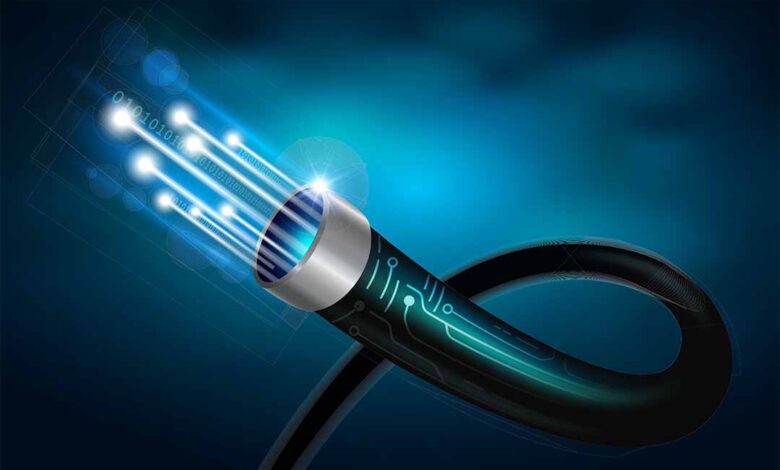
Having a reliable and very effective network cabling system is very important in the functioning of any organization as this makes sure that there is continuity of the network and most importantly ensures the best operation of the network.
Understanding the Importance of Maintenance
In Coral Gables, a city known for its beautiful Mediterranean Revival architecture and lush landscapes, the importance of reliable infrastructure resonates deeply. As businesses thrive in this vibrant community, having a well-maintained data network cabling system is crucial for supporting communication and connectivity needs.
Partnering with a reputable low voltage contractor coral gables can ensure that your cabling infrastructure meets the highest standards of quality and reliability.
A network cabling system is the communication infrastructure of any Information Technology in that it connects different appliances and devices. Poorly maintained cabling can lead to a host of problems including:
- Data Loss and Corruption: Faulty cables can result in data packets being lost or corrupted during transmission.
- Network Downtime: Damaged or poorly managed cables can cause network failures, leading to downtime and loss of productivity.
- Increased Costs: Frequent repairs and replacements can be costly. Proper maintenance can help avoid these unnecessary expenses.
- Security Risks: Poorly managed cables can be more susceptible to physical tampering and other security threats.
Regular Inspection and Testing
The following are the primary reasons for the qualitative and frequent tests of the network cabling system. The importance of periodic examinations or checkups that can be performed on the network cabling system is as follows: Here’s how to effectively conduct inspections and tests:
Visual Inspections
Cabling infrastructure should be inspected periodically The following are the factors that can be inspected in the cabling system: Check for any traces of cable damage, including mechanically-induced damage of the cable and individual wires, broken or loose connectors, or worn-out connectors.
Cable Testing
Use specialized cable testing equipment to make sure that the cables you are implementing in your network are reliable. Try to check whether the signal and connection are continuous, and the quality of data transmission.
To be more specific, testing is a way of checking for weak links or areas of cable that may be degraded during normal periods and not easily noticed during an inspection.
Documentation
Documentation of the cabling system should include the layout of the cabling, connectivity interface points, and the results of all tests conducted. It is recommended that this documentation be kept on hand to help identify issues, or when it is time to migrate to a new backend.
Environmental Considerations
You should also know that there are conditions in which your network cabling system works and these conditions can influence both the functionality of the network as well as the durability of the cables. Consider the following environmental factors:
Temperature and Humidity
Make certain that the environment within which the cable is installed is reasonably maintained in terms of temperature and humidity. High temperatures and humidity can affect the cable and connectors which may result in signal quality loss. One should get acquainted with the climate control systems to ensure the conditions provided are optimal.
Cleanliness
They can also keep the area around the cabling infrastructure clean and free from dust and debris. Well for one, moisture is one of the biggest enemies of electronics and with this cables and connectors tend to be exposed to dust and dirt.
Regular Updates and Upgrades
When it comes to the usage of the network cabling system, one cannot disregard the fact that technology advances and hence changes the needs necessary for certain vital structures. Periodically revisit and modernize your infrastructure to meet up-to-date established norms or discover novel tools and systems to implement in your facility.
Upgrading Cables
With the advancement of technologies, data transmission speeds, and bandwidth demand may require that you change from the normal cables and adopt a higher quality cable such as the Cat6 or Cat7 cables. About once a year, take the time to analyze your network’s efficiency and replace any cables that may no longer deliver the best result.
Updating Connectors and Hardware
Besides outsourcing cables, upgrade your connectors to correspond with connectors, as well as other pieces of hardware, to new standards. This is inclusive of switches, routers which are used in connecting computer systems as well as patch panels.
Proper Cable Management
It is essential to maintain the neatness and efficiency of the cable networks to ensure maximum efficiency of the network cabling system. Here are some tips for proper cable management:
- Labeling: Use proper labeling on all cables so that they will be well organized, clean, and understandable. Provide sturdy labels, and make sure they do not run out of color or wear off to the extent of being almost invisible.
- Cable Organization: Cables physically should be well-arranged either by installing cable trays, cable racks, or cable management panels. Do not bunch cables randomly, this may lead to additional tangling of cables and subsequent destruction.
- Cable Length: A common mistake that most people make is that they tend to use cables that are too long, this should be avoided because they can cause signal interferences and the cable work is ugly. Fit with the shortest cable length possible to enable you to meet your requirements and coil any of the extra cables.
Implementing Redundancy and Backup Solutions
Thus, in this situation, it is crucial to employ redundancy and backup measures in the cabling of the network system.
- Redundant Cabling Paths: Arrange pathways in your network to offer multiple ways of cabling so that a wiring problem does not affect the whole structure. Redundant paths offer multiple routes for data to follow in the Transmission Procedures, which improves the network’s reliability.
- Backup Systems: When installing your network cabling, include backup structures including UPS and backup generators to protect the wiring from power hitches.
Training and Awareness
Make sure that your IT team is knowledgeable and alert about fiber optic and network cable installation guidelines.
- Staff Training: Provide training sessions to your staff regarding proper cabling maintenance practices, testing procedures, and industry best practices. For instance, well-trained staff would be in a better position to pick any detrimental circumstances within the organization earlier on than when they are relicensed.
- Awareness Programs: This entails the use of awareness programs through which all employees shall be informed and encouraged to embrace the need to keep the cabling environment clean and well-arranged. Mention to them that they should verbally come up with anything that can be seen that appears to be problematic to the IT department.
Proactive Maintenance
Like all other systems, failure to maintain a proper maintenance program would lead to many problems cropping up. Schedule routine examinations and tests and make sure to give product updates as soon as it is available.
- Scheduled Maintenance: Develop a preventive maintenance plan, including inspection, testing, and cleaning periods in the claimed schedule. Regular and proper maintenance is essential since it prevents possible hitches from assuming bigger problems that may prove harder to solve.
- Monitoring and Alerts: Use appropriate monitoring techniques that enable you to have alerts in the success of the occurrence of any events or problems concerning your network cabling. These systems can monitor for issues including; degradation of signals, unauthorized persons, or changes in the environment among others to intervene early.
Conclusion
It is therefore important to ensure that you carry out proper maintenance of the data network cabling system so that it can meet its anticipated performance expectations, does not break down frequently and if it does, then it will not be too expensive to repair.
Keeping your network cabling system intact is advisable, as it will help you avoid having to invest in a new system, or newer technology in the future, at a very wrong time.
FAQs
- Why is regular maintenance important for data network cabling systems?
Regular maintenance is crucial for ensuring the reliability and performance of data network cabling systems. It helps identify and address potential issues before they escalate, minimizing downtime and data loss.
- What are some common signs that indicate the need for maintenance in a data network cabling system?
Several signs can indicate that a data network cabling system requires maintenance. These include slow data transfer speeds, frequent network outages, intermittent connectivity issues, and visible signs of wear and tear on cables and connectors.
- How can businesses benefit from partnering with a low-voltage contractor to maintain their data network cabling system?
Partnering with a low-voltage contractor offers several benefits for businesses. These professionals have the expertise and specialized tools required to perform thorough inspections, testing, and maintenance of data network cabling systems.






